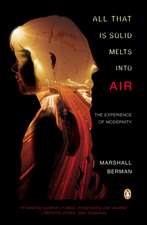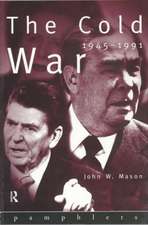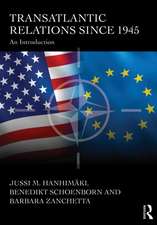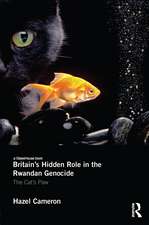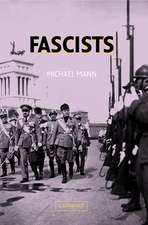Fighting the Future War: An Anthology of Science Fiction War Stories, 1914-1945
Editat de Frederic Kromeen Limba Engleză Hardback – 12 iul 2011
Fred Krome has collected many of these future war stories together for the first time in Fighting the Future War. Bolstered by a comprehensive introduction, and introduced with historical information about both the authors of the stories and the historical time period, these stories provide a view into the field of pulp science fiction writing, the issues that informed the time period between the world wars, and the way people envisioned the wars of tomorrow. Revealing anxieties about society, technology, race and politics, the genre of the future war story is important material for students of history and literature.
| Toate formatele și edițiile | Preț | Express |
|---|---|---|
| Paperback (1) | 393.05 lei 6-8 săpt. | |
| Taylor & Francis – 12 iul 2011 | 393.05 lei 6-8 săpt. | |
| Hardback (1) | 829.02 lei 6-8 săpt. | |
| Taylor & Francis – 12 iul 2011 | 829.02 lei 6-8 săpt. |
Preț: 829.02 lei
Preț vechi: 1108.12 lei
-25% Nou
Puncte Express: 1244
Preț estimativ în valută:
158.63€ • 165.62$ • 131.29£
158.63€ • 165.62$ • 131.29£
Carte tipărită la comandă
Livrare economică 04-18 aprilie
Preluare comenzi: 021 569.72.76
Specificații
ISBN-13: 9780415879507
ISBN-10: 0415879507
Pagini: 444
Ilustrații: 25 halftones and Following Key Readings Media Today
Dimensiuni: 187 x 235 mm
Greutate: 0.96 kg
Ediția:1
Editura: Taylor & Francis
Colecția Routledge
Locul publicării:Oxford, United Kingdom
ISBN-10: 0415879507
Pagini: 444
Ilustrații: 25 halftones and Following Key Readings Media Today
Dimensiuni: 187 x 235 mm
Greutate: 0.96 kg
Ediția:1
Editura: Taylor & Francis
Colecția Routledge
Locul publicării:Oxford, United Kingdom
Public țintă
UndergraduateCuprins
Fighting the Future War: Introduction
Chapter One: Hugo Gernsback and World War I.
Hugo Gernsback, "Imagination versus Fact," (Electrical Experimenter, April 1916)
Hugo Gernsback, "The Trench Destroyer" (Electrical Experimenter, February 1917)
Hugo Gernsback, "Shooting with Electricity" (Electrical Experimenter, June 1917)
Hugo Gernsback, "Winning the War" (Electrical Experimenter, May 1919)
Hugo Gernsback, "Science and War" (Electrical Experimenter, June 1918)
Hugo Gernsback, "Will the Germans Bombard New York?" (Electrical Experimenter, July 1918)
Image, Poster from 1917-18, "That Liberty Shall Not Perish from the Earth."
Hugo Gernsback, "The Magnetic Storm" (Electrical Experimenter, August 1918)
Chapter Two: The Future War Story during World War I
C.J. Cutcliffe Hyne, "The Inventor of Meltite," (London Magazine, 1916)
George Stratton, "Omegon," (Electrical Experimenter, September 1915)
George Stratton, "The Gravitation Nullifier," (Electrical Experimenter, October 1915)
Charles Adams, "Eddy Currents," (Electrical Experimenter, May 1917)
Chapter Three: The Inter-war Years and the Rise of the Airmen
Hugo Gernsback, "Fiction versus Facts," (Amazing Stories July 1926)
Philip Francis Nowlan, "Armageddon 2419," (Amazing Stories, August 1928)
David Keller, "The Bloodless War," (Air Wonder Stories, July 1929)
Louis Buswell," Clouds of Death" (Amazing Stories, June 1929)
David Lasser, "The Rocket and the Next War" (Presidential Address, American Rocket Society, 1931)
Nat Schachner, "The Revolt of the Scientists," (Wonder Stories, April 1933)
Chapter Four: The Ambivalence of Science: Technology and Armageddon
Carl Spohr, "The Final War: Part 2" (Wonder Stories, April 1932)
Charles Diffin, "Holocaust" (Astounding Stories, June 1931)
Nat Schachner, "World Gone Mad" (Amazing Stories, October 1935)
Leigh Keith, "No Medals," (Astounding, March 1935)
Major J. Halpin Connolly, "War in a Mechanistic Civilization" (Infantry Journal, July 1939)
Chapter Five: After the Future War
Francis Flagg, "After Armageddon," (Wonder Stories, September 1932)
C.L. Moore, "There Shall be Darkness," (Astounding Science Fiction, February 1942)
Stanton A. Coblentz, "The Green Plague," (Astounding Stories, April 1934)
Joseph E. Kelleam, "Rust," (Astounding Stories, October 1939)
Chapter Six: World War II
Frederic Arnold Kummer, Jr., "The Ice Plague," (Amazing Stories, October 1939)
Alexander Blade, "Dr. Loudon’s Armageddon," (Amazing Stories, September 1941)
Cleve Cartmill, "Deadline" (Astounding Science Fiction, March 1944)
Conclusion: Old Wine in New Bottles?
Chapter One: Hugo Gernsback and World War I.
Hugo Gernsback, "Imagination versus Fact," (Electrical Experimenter, April 1916)
Hugo Gernsback, "The Trench Destroyer" (Electrical Experimenter, February 1917)
Hugo Gernsback, "Shooting with Electricity" (Electrical Experimenter, June 1917)
Hugo Gernsback, "Winning the War" (Electrical Experimenter, May 1919)
Hugo Gernsback, "Science and War" (Electrical Experimenter, June 1918)
Hugo Gernsback, "Will the Germans Bombard New York?" (Electrical Experimenter, July 1918)
Image, Poster from 1917-18, "That Liberty Shall Not Perish from the Earth."
Hugo Gernsback, "The Magnetic Storm" (Electrical Experimenter, August 1918)
Chapter Two: The Future War Story during World War I
C.J. Cutcliffe Hyne, "The Inventor of Meltite," (London Magazine, 1916)
George Stratton, "Omegon," (Electrical Experimenter, September 1915)
George Stratton, "The Gravitation Nullifier," (Electrical Experimenter, October 1915)
Charles Adams, "Eddy Currents," (Electrical Experimenter, May 1917)
Chapter Three: The Inter-war Years and the Rise of the Airmen
Hugo Gernsback, "Fiction versus Facts," (Amazing Stories July 1926)
Philip Francis Nowlan, "Armageddon 2419," (Amazing Stories, August 1928)
David Keller, "The Bloodless War," (Air Wonder Stories, July 1929)
Louis Buswell," Clouds of Death" (Amazing Stories, June 1929)
David Lasser, "The Rocket and the Next War" (Presidential Address, American Rocket Society, 1931)
Nat Schachner, "The Revolt of the Scientists," (Wonder Stories, April 1933)
Chapter Four: The Ambivalence of Science: Technology and Armageddon
Carl Spohr, "The Final War: Part 2" (Wonder Stories, April 1932)
Charles Diffin, "Holocaust" (Astounding Stories, June 1931)
Nat Schachner, "World Gone Mad" (Amazing Stories, October 1935)
Leigh Keith, "No Medals," (Astounding, March 1935)
Major J. Halpin Connolly, "War in a Mechanistic Civilization" (Infantry Journal, July 1939)
Chapter Five: After the Future War
Francis Flagg, "After Armageddon," (Wonder Stories, September 1932)
C.L. Moore, "There Shall be Darkness," (Astounding Science Fiction, February 1942)
Stanton A. Coblentz, "The Green Plague," (Astounding Stories, April 1934)
Joseph E. Kelleam, "Rust," (Astounding Stories, October 1939)
Chapter Six: World War II
Frederic Arnold Kummer, Jr., "The Ice Plague," (Amazing Stories, October 1939)
Alexander Blade, "Dr. Loudon’s Armageddon," (Amazing Stories, September 1941)
Cleve Cartmill, "Deadline" (Astounding Science Fiction, March 1944)
Conclusion: Old Wine in New Bottles?
Notă biografică
Frederic Krome is an Assistant Professor of History at the University of Cincinnati, Clermont College.
Recenzii
'Krome’s Fighting the Future War makes a valuable contribution to the history of science fiction as seen in its treatment of a particular scenario: the war story. Science-fiction fans and scholars will find it a convenient source for some interesting material that has hitherto not been reprinted.'- Stephen Curley, Journal of American Culture
'Frederick Krome’s Fighting the Future War is a remarkable and useful anthology of American sf stories selected to support Clarke’s thesis…it richly renders that early pulp era without forced enthusiasms and without condescension or irony. I should think this would make a terrific teaching anthology.' - John Huntington, Science Fiction Studies
'Frederick Krome’s Fighting the Future War is a remarkable and useful anthology of American sf stories selected to support Clarke’s thesis…it richly renders that early pulp era without forced enthusiasms and without condescension or irony. I should think this would make a terrific teaching anthology.' - John Huntington, Science Fiction Studies
Descriere
The period between World War I and World War II was one of intense change. Everything was modernizing, including our technology for making war—witness machine guns, trench warfare, biological agents, and ultimately The Final Solution. This modernization and eye toward the future was reflected in many facets of pop culture, including fashion, home-wear design, and the popular literature of the time. In sci-fi, a specific genre emerged—that of the ‘future war.’
Fred Krome has collected many of these future war stories together for the first time in Fighting the Future War. Bolstered by a comprehensive introduction, and introduced with historical information about both the authors of the stories and the historical time period, these stories provide a view into the field of pulp science fiction writing, the issues that informed the time period between the world wars, and the way people envisioned the wars of tomorrow. Revealing anxieties about society, technology, race and politics, the genre of the future war story is important material for students of history and literature.
Fred Krome has collected many of these future war stories together for the first time in Fighting the Future War. Bolstered by a comprehensive introduction, and introduced with historical information about both the authors of the stories and the historical time period, these stories provide a view into the field of pulp science fiction writing, the issues that informed the time period between the world wars, and the way people envisioned the wars of tomorrow. Revealing anxieties about society, technology, race and politics, the genre of the future war story is important material for students of history and literature.

